Making a home while making art: Erving couple brings creativity to every project
| Published: 03-20-2023 3:43 PM |
A decade before Bryant Stewart and Jeanie Schermesser began transforming a former church into their home and art studio, Stewart spotted the Erving building from Route 2. “I stopped in and met the owner, Clessen Field,” said Stewart, 73.
Stewart had just been discharged from the Air Force and was enrolled at Greenfield Community College as an art student. Over the next several years, Stewart mowed Field’s lawn and helped him build things; when Field decided to sell the circa-1900 building, Stewart and his then-sweetheart Schermesser bought it.
“Starting in 1980, it took us about a decade to rehabilitate the place to a point we considered livable,” said Stewart. “Over 40 years later, we’re still at it.” The purchase included leftover antiques, as well as relics from the building’s original purpose, like a printed program from the first service ever held at the Farley Union Congregational Church.
“We sold enough antiques to pay for a well and septic tank,” said Schermesser, 70. For years, rain had poured through holes in the roof, leading to rotten beams and other messes. After patching holes, the couple turned their attention to rehabbing the interior, starting with the basement.
“It was a wreck,” said Stewart. “We stripped ceilings and walls, and I laid about 3,000 bricks, having previously worked as a brick mason’s tender.” Soon, they had one habitable room. Eventually, the entire basement served as their living quarters, which remains the case today. The former sanctuary serves as their studio and houses voluminous collections of their original art.
Born in Montreal, Stewart and his family emigrated to the U.S. when he was a teen. His ancestry includes Scottish and Polish roots; his maternal grandfather grew up in Ukraine. “What’s going on in Ukraine isn’t new,” said Stewart. “When my grandfather Kostaniuk was a teen, around 1900, Russian soldiers seized homes and farms, offering Ukrainians a choice: give us your farms and work for us, or you’ll be shot. My grandfather watched as soldiers took his parents behind their barn and killed them.”
The orphaned teen was drafted into the Russian Army. “My grandfather hated it,” said Stewart. “He was forced to work in military stables because he was good with horses. One day, he shot his superior and went AWOL, stowing away on ship. He ended up in Halifax, Nova Scotia and made his way to Montreal, working for the Canadian National Railroad.”
Stewart’s grandparents settled in a Montreal neighborhood known as Victoriatown, home to many immigrants. “They had a beautiful little house,” said Stewart, “with brickwork, a marble fireplace, and wonderful stairways.” Yet more upheaval occurred: the lovely home was bulldozed as neighborhoods were taken by eminent domain to make way for the 1967 World’s Fair, also known as Expo ‘67.
Article continues after...
Yesterday's Most Read Articles
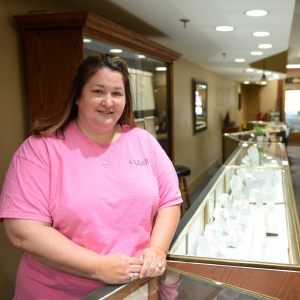 Cleary Jewelers plans to retain shop at former Wilson’s building until 2029
Cleary Jewelers plans to retain shop at former Wilson’s building until 2029
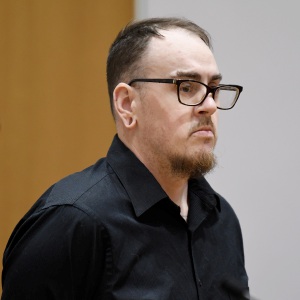 Orange man gets 12 to 14 years for child rape
Orange man gets 12 to 14 years for child rape
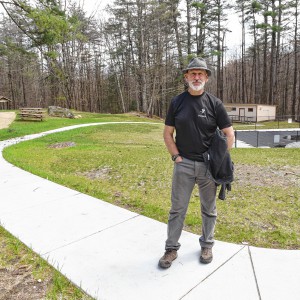 $427K to expand Camp Apex capacity in Shelburne
$427K to expand Camp Apex capacity in Shelburne
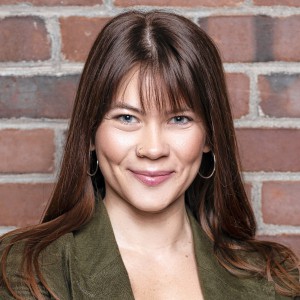 Conway resident leading pilot program to help families facing financial ‘cliff effect’
Conway resident leading pilot program to help families facing financial ‘cliff effect’
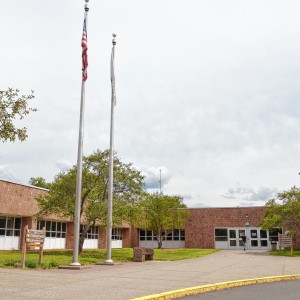 Franklin County Technical School Honor Roll, Semester 1
Franklin County Technical School Honor Roll, Semester 1
 Greenfield Police Logs: April 2 to April 8, 2024
Greenfield Police Logs: April 2 to April 8, 2024
“My grandparents were relocated, but it took the life out of my grandfather. He lost both legs, maybe to diabetes or infection,” said Stewart. “My dad moved our family to the U.S. and my teen years were spent in Lunenburg, where I was quarterback on the football team.”
Upon graduating from high school, Stewart was drafted. ” I enlisted in the Air Force, to stay out of the Army,” he said, “and to avoid ending up as a grunt in the jungles of Vietnam.”
Stewart could have sidestepped the draft by returning to his birthplace; instead, he complied. “I scored high on an aptitude test and was given a choice of jobs. I went with entomology, thinking it might be interesting, but I ended up applying pest control chemicals and was exposed to Agent Orange and other chemicals for four years, including substances that were banned in the U.S. We used DDT, chlordane, lindane, arsenic, you name it. I was exposed to all of them and, as a result, suffer from toxic peripheral neuropathy.”
Despite hardships, Stewart moved forward. Schermesser, too, is habitually upbeat in the face of adversity. Born with one complete arm and one truncated arm, the Ohio native says her parents raised her to believe she could accomplish anything she wanted.
The couple started out as friends and artistic peers, having met at Massachusetts College of Art and Design (“MassArt”) in Boston. “Bryant had a printmaking set-up out here in western Mass,” said Schermesser, “and I also did printmaking. I came to visit, and really liked it here.” Friendship blossomed into romance, and the couple went on to marry and raise two sons in their Erving home.
Their collaborations have extended beyond home and family: the couple produced large murals at sites including the Big E and the Greenfield Public Library. Working together and separately, Stewart and Schermesser have produced stunning artwork representing many styles.
Like Stewart, Schermesser trained in drawing, painting, and printmaking; she was head of the Eaglebrook School art department, and now tutors GCC art students. “To be a so-called successful artist, you have to do a lot of promoting,” she said. “That’s not how I want to spend my time. Now that I’m older, I’m content with just doing the work. If my work means something to others when I’m gone, great.” Most of her work is “very personal and a window into what I think and feel.” She feels the most important questions are “Am I happy?” and “Am I still creating?” If she answers yes, Schermesser feels at peace.
Stewart’s career took a number of trajectories; he credits Budge Hyde, his GCC painting instructor, for inspiring him to further his education. Hyde helped Stewart prepare a portfolio to apply to MassArt, and also when he wanted to study at Oxford [England].
“After graduating from MassArt, I realized they should’ve offered a class called, ‘Now What Do You Do?’ because unless you have a rich uncle or an inheritance, you have to support yourself,” said Stewart. He did artwork for companies in Boston and found non-art jobs, as well, including as a manager at the 8,500-acre Wendell State Forest, a position he held for 30 years.
Perhaps best known for his gorgeous renderings of antique vehicles, Stewart is a longtime fan of old trucks and cars. “I started seeing old Chevy trucks everywhere around 1980.” With two friends, he started the Northeast Chevy GMC truck club, which attracted 500 members. “We held a truck show at Wendell State Forest for 25 years. Now we’re at the Lions Club in Hatfield, where we’ll have our 42nd annual show this year.”
When the magazine ‘Pick-ups and Panels in Print’ sought someone with pre-1973 Chevy GMC truck knowledge to edit their publication, Stewart was perfect for the job. “I went all over the country on their dime for years, taking photos.”
Stewart and Schermesser built their lives around their passions and skills, and continue to do so. When told that his adventures would make a fascinating book, Stewart replied, “I started writing down some of my stories; maybe someday it will make it to book form.”
Such a book could give readers access to astounding stories. Stewart spent intimate time with original works of the masters while enrolled at the Ruskin School of Drawing, Painting, and Printmaking at Oxford. He cycled throughout the English countryside carrying an easel, paints, and brushes on his back. “Everywhere I looked, there was something beautiful I could paint,” he said.
He’s had stateside adventures, too, like visiting Massachusetts coastal areas to prepare for a massive seascape mural he and Schermesser were hired to paint on a space 100 feet long and twelve feet high, for which they worked “round the clock for eight weeks.”
While a Wendell State Forest manager, Stewart hosted a large group of children and their four adult chaperones one day about 20 years ago. “A big tornado came through, taking out 170 acres of forest,” said Stewart. ”We were all down at the beach, and I heard distant thunder. I told the chaperones to get the kids out of the water.” The day turned from brilliantly sunny to torrential rain in an instant. “The sky was jet black,” said Stewart, “and I saw a blue-black line coming toward us.”
After Stewart shepherded his visitors into the office / workshop, “there was a wicked noise like a train hitting the side of the building. Later, we learned that the tornado had sucked water out of Wickett Pond, taking frogs and fish with it.” He added: “We should have been lying on the floor, but we were transfixed, staring out the window at that immense power. We all survived.”
Stewart’s sense of awe has carried him through many chapters of life, and Schermesser, too, greets life with gratitude and wonder. “Earth is a fragile place, yet it’s perfectly suited to support us,” she said. “That’s no accident. Every living thing is connected and supported. I think that’s a miracle.” She summed up her philosophy: “People need to love one another and our environment. It’s that simple.”
Eveline MacDougall, the author of “Fiery Hope,” is a Canadian-American artist, musician, and mom. She welcomes comments from readers: eveline@amandlachorus.org.

 Speaking of Nature: Indulging in eye candy: Finally, after such a long wait, it’s beginning to look like spring is here
Speaking of Nature: Indulging in eye candy: Finally, after such a long wait, it’s beginning to look like spring is here Celebrating ‘Seasonings’: New book by veteran preacher and poet, Allen ‘Mick’ Comstock
Celebrating ‘Seasonings’: New book by veteran preacher and poet, Allen ‘Mick’ Comstock Faith Matters: How to still the muddy waters of overthinking: Clarity, peace and God can be found in the quiet spaces
Faith Matters: How to still the muddy waters of overthinking: Clarity, peace and God can be found in the quiet spaces A time for every purpose under heaven: Free sing-a-long Pete Seeger Fest returns to Ashfield, April 6
A time for every purpose under heaven: Free sing-a-long Pete Seeger Fest returns to Ashfield, April 6
